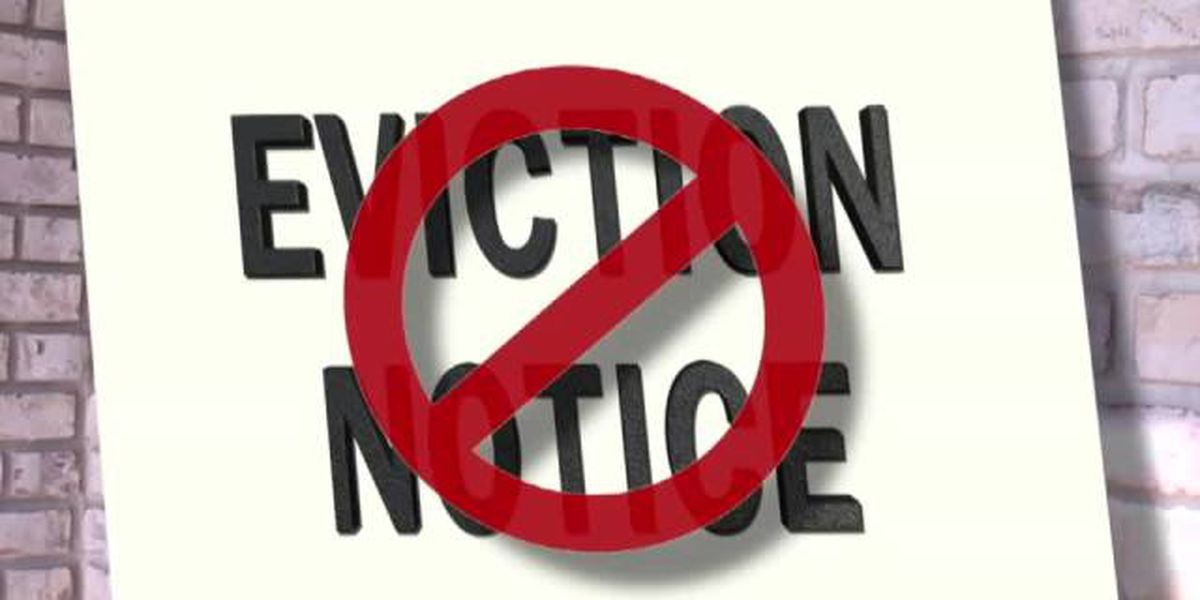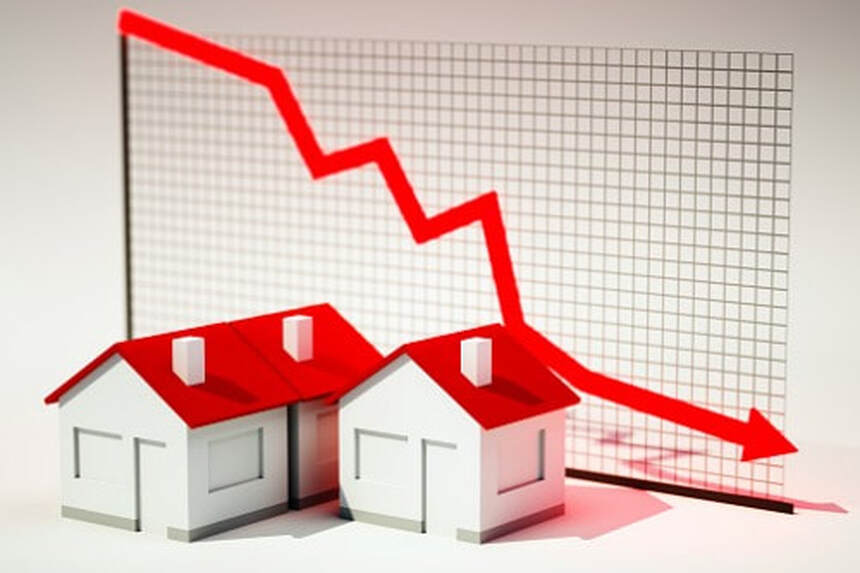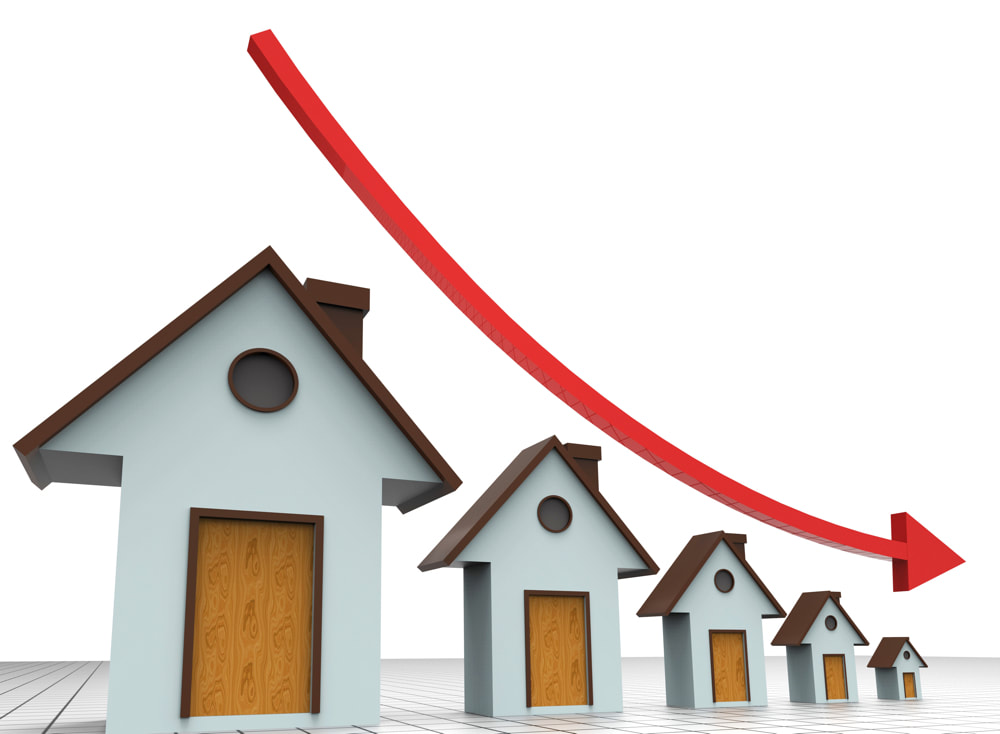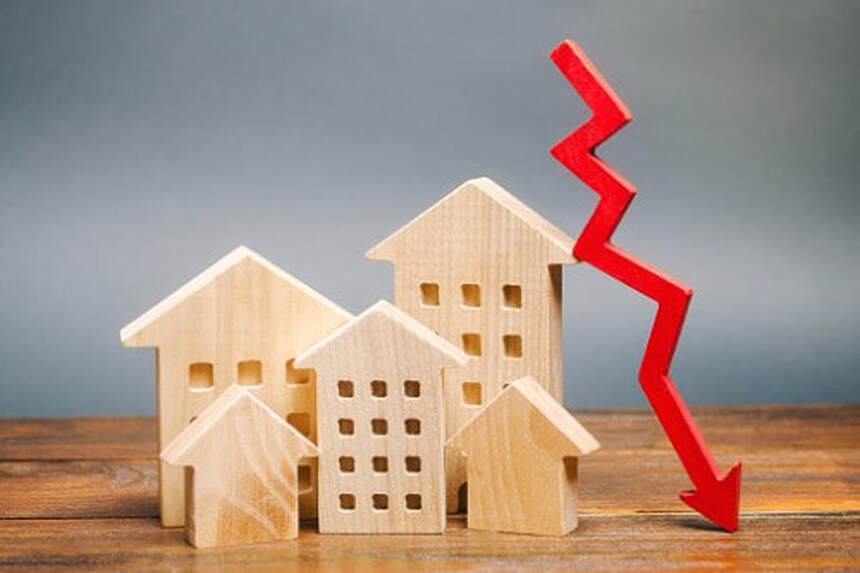|
The Biden administration announced yesterday that it will extend the CDC’s federal moratorium on evictions of renters who owe back rent through the end of June. The moratorium had been set to expire on Wednesday, having been put in place under the Trump Administration. It had been criticized by both tenant advocacy groups, who argued it left too many loopholes, and landlord advocates, who argued it restricted the freedom of property owners.
Holden Lewis (pictured), home and mortgage expert at NerdWallet, believes that in our current stage of recovery, an extension of the moratorium was necessary. “There’s so much back rent owed,” Lewis said. “I’ve read that just in January, there was almost $60 billion in back rent. We have had $52 billion of rent assistance under both administrations, that is due to be handed out. The bottom line is there is still more back rent owed than there is assistance. This problem is going to continue for a few more months until people get back on their feet.” Lewis explained that the Biden administration was widely expected to make this move, and only left it to the last minute because of the sheer volume of other tasks it is facing at the moment. He also noted that we can expect the moratorium to be lifted when a confluence of factors drive more stability for renters. While vaccination numbers have exceeded expectations, we’re not out of the pandemic yet. Employment data remains below pre-pandemic levels, despite some improvements, and job losses remain concentrated among lower wage earners and service industry workers, who largely rent. Even if President Biden hopes for an effective end to the pandemic in America by July 04, it’s somewhat unlikely that we will not still be in some form of economic recovery well past that date. It’s likely, then, that the moratorium isn’t going anywhere anytime soon. While that news might be a relief for renters, the outlook for landlords is somewhat bleaker. Lewis noted that many landlords across the country are facing a tight squeeze as expenses and carrying costs mount up, while many tenants are still unable to pay their rents. Those struggles are then passed on to the mortgage servicing industry, Lewis noted, which has to bear unpaid mortgage bills because of a dearth in rent payments. It’s an unhappy picture that’s persisted for a long time and while renters have shown they’ll go to extreme lengths to pay their bills, the sheer volume of unpaid rent is a massive hurdle to overcome. Lewis sees a solution in the form of rental relief programs. While he expects the process will be messy and convoluted, billions of dollars in government spending ought to dislodge some of the stuck bubbles of unpaid rent. If the federal government can shoulder the primary burden as renters get back on their feet, then mortgage professionals can step in and help landlords pay back-bills through balloon payment programs. If these relief payments don’t come and the countless Americans owing back rent are evicted, they could be swept up in a rapidly accelerating affordability crisis. Lewis believes that this could be “disastrous” for millions of Americans suddenly evicted from their homes and unable to afford rent. Nevertheless, Lewis takes hope in the federal government’s apparent unwillingness to let this happen. “I have hope because I’m just a classic believer in throwing money at the problem after a disaster,” Lewis said. “I realize a lot of people disagree with that, but when you have a disaster of this magnitude, it’s just fine to throw money at it and worry less about the effect later.”
0 Comments
Thirty-year fixed-rate home loans edged higher this week, increasing roughly half a percentage point from historic lows, according to Freddie Mac’s Primary Mortgage Market Survey.
The lender reported Thursday that the average rate on the 30-year fixed mortgage climbed from 3.09% to 3.17% week over week. A year ago, the benchmark rate averaged 3.50%. The average 15-year fixed-rate loan, popular among borrowers looking to refinance, was up from 2.40% last week to 2.45%. The 5-year Treasury-indexed hybrid adjustable-rate mortgage rose five basis points to 2.84%. “During the course of the pandemic, ‘home’ has become more important than ever. As a result, strong purchase demand continues—but buyers also outnumber the sellers,” said Freddie Mac chief economist Sam Khater. “Since January, mortgage rates have increased half a percentage point from historic lows, and home prices have risen, leaving potential homebuyers with less purchasing power. Unfortunately, this has disproportionately affected the low end of the market, where supply is the slimmest.” The white-hot US housing market is a battleground for homebuyers, with more than 60.9% facing intense competition in February.
Redfin reported Thursday that the number of home offers that encountered bidding wars rose slightly to 60.9% from 59.3% in January – marking the 10th consecutive month in which more than half of Redfin offers faced competition. “The uptick in mortgage rates is likely fueling more bidding wars in the short term because house hunters are rushing to buy homes before rates rise even further,” said Redfin chief economist Daryl Fairweather. “If mortgage rates move significantly higher, we’ll likely see some buyers move to the sidelines, which will curb competition in the long run.” According to a recent Redfin survey, 17% of Americans would slow down their home searches if mortgage rates exceeded 3.5%. But for now, homes are still selling rapidly and fetch more than sellers are asking for. In February, the typical home that sold in February went under contract in 32 days – 32 days faster than in February 2020 – and a record 36% of homes sold for more than their asking prices. “Every home I put on the market for under $700,000 is selling in a day,” said Redfin Jacksonville, Fla. real estate agent Heather Kruayai. “I recently listed a three-bedroom single-family house in Durbin Crossing that got 30 offers. I’ve never seen that in my life. We had to stop showings because the sellers just couldn’t accommodate that many people coming through their house. Buyers were calling me up themselves and pleading with me to pick their offers. My client ultimately chose the bidder who had the highest offer and agreed to pay the difference if the appraisal came in lower than the contract price.” Salt Lake City (92.9%) topped the list of 24 metro areas with the highest bidding-war rate, followed by San Diego (84.4%) and Phoenix (78.1%). Denver and San Francisco/San Jose rounded out the top five, both at 76.4%. Premium homes listed between $1 million and $1.5 million were the most popular among homebuyers, with 71.4% of Redfin offers facing competition last month. By property type, single-family homes (63.7%) had a much higher bidding-war rate than townhomes (58.5%) and condominiums (49.3%). The trends of rising interest rates and lumber prices, paired with supply shortages, pushed new home sales to a 10-month low in February.
Sales of newly built, single-family homes plunged 18.2% to a 775,000 seasonally adjusted annual rate – marking the lowest level since May 2020, data from the US Department of Housing and Urban Development and the Census Bureau showed. The February reading of 775,000 units is the number of homes that would sell if this pace continued for the next 12 months. “Though buyer traffic remains strong, some home building activity is being delayed due to material shortages,” said Chuck Fowke, chairman of the National Association of Home Builders (NAHB). “This is forcing builders and buyers to grapple with rising affordability issues, as soaring lumber prices have added more than $24,000 to the price of a new home.” The median sales price was $349,400, up 5.3% from the $331,800 posted in 2020. Inventory increased slightly to a 4.8 months’ supply, with 312,000 new single-family homes for sale. This is 12.7% lower than February a year ago. Homes available for sale that have not begun construction yet shoot up 67% year over year indicate increasing delays and higher costs associated with construction. “While rising material costs and other supply-side issues are causing delays for some projects, other factors contributing to the slowdown include the winter storms in areas like Texas and rising mortgage rates, which are up more than 30 basis points over the past five weeks,” said NAHB Chief Economist Robert Dietz. Regionally on a year-to-date basis, new home sales fell 9.3% in the West and jumped in the three other regions: up 6% in the Northeast, 24.7% in the Midwest, and 23.2% in the South. After two months of steady increases, existing-home sales dwindled in February due to still-tight inventory, according to the National Association of Realtors.
Month over month, total existing-home sales (completed transactions that include single-family homes, townhomes, condominiums and co-ops) fell 6.6% to a seasonally adjusted annual rate of 6.22 million in February. Sales in total were up 9.1% to a 5.70 million pace year over year. Single-family home sales were also down 6.6% to a seasonally adjusted annual rate of 5.52 million while existing condominium and co-op sales were recorded at a 700,000 unit rate. “Despite the drop in home sales for February – which I would attribute to historically-low inventory – the market is still outperforming pre-pandemic levels,” said NAR chief economist Lawrence Yun. “Home affordability is weakening. Various stimulus packages are expected, and they will indeed help, but an increase in inventory is the best way to address surging home costs.” Total housing inventory held steady in February at 1.03 million units but was down 29.5% from 1.46 million a year ago. Unsold inventory rose slightly from January’s 1.9-month supply to a 2-month supply. In February 2020, it was at a 3.1-month supply. Properties typically remained on the market for 20 days, selling faster than in January (21 days) and February last year (36 days). Nationwide, all housing types saw a 15.8% year-over-year increase in the median existing-home price, up to $313,000 in February – marking the 108th consecutive month of annual gains. First-time homebuyers accounted for 31% of sales, down from 33% in January and 32% in February 2020. Individual investors or second-home buyers acquired 17% of homes, up 15% month over month and unchanged from the year before. All-cash sales made up 22% of transactions, up 19% month over month, and 20% year over year. Distressed sales (foreclosures and short sales) stayed the same at less than 1%. Yun forecasted a possible slowdown in existing-home sale growth in the months as steep prices and rising mortgage rates cut into home affordability. “I still expect this year’s sales to be ahead of last year’s, and with more COVID-19 vaccinations being distributed and available to larger shares of the population, the nation is on the cusp of returning to a sense of normalcy,” he said. “Many Americans have been saving money, and there’s a strong possibility that once the country fully reopens, those reserves will be unleashed on the economy.” February’s housing start numbers have been disappointing for the housing market. Housing starts fell last month by 10.3% to a seasonally adjusted annual rate of 1.42 million units, according to HUD and the Census Bureau. As house prices appreciation has accelerated across the country since Q3 of 2020, many saw an increase in new home supply as a possible cure for looming affordability issues, especially in frothy suburban markets. February’s housing starts may tell us that home builders aren’t riding in to save the day anytime soon.
It seems that 2020’s endemic problem with lumber prices has played a key role in declining housing starts. Rising interest rates, too, have dropped the number down. February’s ice storm across much of the central US also depressed these numbers, but economists and experts shared with MPA that the issues of these weak housing start numbers are far more structural, and likely to shape the housing market for at least the medium-term. “While single-family starts for the first two months of the year are 6.4% higher than the first two months of 2020, there has been a 36% gain over the last 12 months of single-family homes permitted but not started as some projects have paused due to cost and availability of materials,” said NAHB chief economist Robert Dietz (pictured). “Single-family home building is forecasted to expand in 2021, but at a slower rate as housing affordability is challenged by higher mortgage rates and rising construction costs.” Dietz noted that while lumber prices are playing an outsized role in this gap between permitted and started houses, builders are struggling with a number of key supply chain issues. Appliances, for example, are becoming harder to acquire and install in a timely, cost-effective manner. The pandemic has hit few mall operators harder than Pyramid Management Group, a family-run owner of 14 US shopping centers worth $4 billion before lockdowns hammered property values.
Reappraisals -- triggered last year amid the firm’s mounting mortgage delinquencies -- slashed valuations on eight of Pyramid’s malls by 59% on average, leaving those centers worth less than their debt. “I’m paying a $50 bounty for somebody who can come up with a more dramatic word than ‘apocalyptic,’” Congel said in an interview. “We don’t believe that to be the long-term forecast for the viability of the industry.” Malls were losing market share to e-commerce and discount retailers long before the pandemic. Now, as tenants withhold rents and shutter stores, only about half of the country’s 1,100 enclosed regional centers are likely to survive, according to Floris van Dijkum, an analyst with Compass Point Research & Trading. The delinquency rate on regional mall commercial mortgage-backed securities was 22.9% in February, the highest of any real estate category, according to Moody’s Investor Service. Even the strongest landlords -- Simon Property Group Inc. and Brookfield Asset Management Inc. -- have talked about walking away from some of their shopping centers rather than throwing good money after bad. For Pyramid, many of its malls benefit from being “the only game in town” in their New York and Massachusetts markets, but the company may not have the financial staying power to weather prolonged troubles for tenants, according to Gwen Roush, an analyst with rating service DBRS Morningstar. “A big anchor vacancy or extended period of lower foot traffic and possible need for longer periods of rent relief for tenants is a bigger hill to climb for them versus a Brookfield or Simon,” Roush said in an email. Hardest hit among Pyramid’s properties was Destiny USA, New York’s largest mall, in the company’s headquarters city of Syracuse. The center was valued at just $203 million after a 71% appraisal reduction last year and has $430 million in CMBS debt. In addition, Moody’s this month downgraded $285 million in municipal bonds deeper into junk status, citing the mall’s “rapid decline in occupancy.” While he’s not prepared to part with any properties yet, Congel said he can’t guarantee Pyramid -- the company founded by his father in the 1970s -- will be able to keep everything. He’s been hearing from vulture investors sniffing around for distressed real estate bargains. “They’re always circling wherever they smell rotting flesh,” he said. “That’s their genetic makeup.” But his lenders have been patient because there are few upsides to repossessing his properties. They extended the debt maturity date on Destiny until June 2022 and granted loan modifications on other malls, providing more time to line up new financing. “The lenders -- whether they be CMBS or balance-sheet lenders -- know that by continuing to work with us, that will create the highest return and recovery for bondholders and debtholders,” he said. Congel also sees a budding turnaround as COVID-19 vaccine deployment allows his malls to repopulate. Foot traffic has returned to about 80% of pre-pandemic levels, despite the ongoing restrictions on seating at cinemas and food courts and the border closure that keeps Canadian shoppers away from Pyramid’s malls in upstate New York. Longer term, he’s finding new tenants to replace shuttered department stores. Home Depot Inc., Target Corp. and even an Amazon.com Inc. supermarket are leasing big blocks of space. Burlington Stores Inc., Best Buy Co. and Dick’s Sporting Goods Inc. have been “opening stores like crazy,” Congel said. Pyramid is adding apartments and hotels at some properties to help diversify revenue. But Congel plans to keep retailing as the main reason to visit his malls. “People still like to go out and dine and shop,” he said. “You can’t replicate that physical experience.” US mortgage rates climbed for the fifth consecutive week following the Fed’s announcement on Wednesday.
Despite the Fed’s decision to keep rates low, the 30-year fixed-rate mortgage was up four basis points to 3.09% week over week. The uptrend may have been caused by several market conditions, according to Freddie Mac chief economist Sam Khater. “As expected, mortgage rates continued to inch up but are still hovering around 3%, keeping interested buyers in the market,” Khater said. “However, residential construction has declined for two consecutive months and given the very low inventory environment, competition among potential homebuyers is a challenging reality, especially for first-time homebuyers.” The average rate for a 15-year fixed loan also rose this week, up to 2.40% from 2.38% the week before. The five-year Treasury-indexed hybrid adjustable-rate mortgage (ARM) jumped two basis points to 2.79% week over week. The Biden Administration’s $1.9 trillion stimulus package has been signed into law and is already making its presence felt across the US economy. While markets have already priced in the historic level of federal spending in the form of higher rates, we are also beginning to see material impacts as emergency unemployment benefits are extended and stimulus checks start arriving in mailboxes.
But what will this spending mean for the housing market and the mortgage industry? Beyond just a rising rate environment, what can mortgage professionals expect from a stimulus package that is explicitly designed to address the economic hardships felt disproportionately by lower-income Americans during the pandemic? While the full impact of the package will be felt over the coming weeks and months, some experts shared their housing market predictions with MPA. “The stimulus payments just started hitting people’s bank accounts, so I can see a ramp-up in the next month or two,” said Kenon Chen, Executive VP of corporate strategy at Clear Capital. “The timing corresponds well with the seasonal buying season ramping up before the summer and the desire for remodeling projects to be complete and ready to be enjoyed by the time school is out.” Chen noted that the stimulus package could give a bit more flexibility to homeowners with new equity accrued in their properties, looking to improve their properties with cash-out refis or pay off expensive debt. These are already ongoing trends, but with housing supply constrained and the market already white-hot, many homeowners may use this stimulus as a chance to solidify their financial footing and improve their homes. For Henry Coffey, managing director at Wedbush Securities, the package’s impacts are likely to come in the form of overall consumer confidence in the economy. While he explained that this increased economic activity will drive treasury rates higher, pushing mortgage rates up with them, there are positives in the package for the housing market as a whole. He expects that even if rising rates impact affordability, at a macro level there’s more than enough housing demand to absorb that extra cost. Much of the impact on housing, Coffey noted, will come down to how people spend their extra cash. If the majority of delinquent renters use their stimulus to pay down back rent, as some studies have shown they probably will, the impact on harder-hit multifamily units will be significant. The same goes for homeowners who have spent a year in forbearance. Coffey noted, too, that he doesn’t see any inherent risk to the housing market or mortgage industry in this stimulus package. Rising rates are not inherently risky in and of themselves and while some noise has been made about impacts on the deficit, Coffey highlighted what seems to be a fact of government these days: when they’re in power, neither Republicans nor Democrats care about deficits. At the bottom end, Coffey believes that the bill will put much-needed money out into the economy to help towns, cities, states navigate the remainder of the pandemic. Crucially, it puts plenty of money into getting more shots in more arms. While extra stimulus checks will help, Coffey believes that getting families vaccinated and putting kids back in school will make a meaningful change for the better. As for mortgage professionals getting ready to navigate in a post-stimulus market, Coffey believes that they’re already taking steps in the right direction. “They’re probably already there, they’re focused on purchase money mortgages,” Coffey said. “They’ve got to have a mortgage business that focuses on homeownership and home investing because the refinance market is going to cool off. But mortgage brokers get it, they’re always ahead of the curve in terms of how they plan their business.” Demand for refinances declined 43% from a year ago, as rising mortgage rates put a brake on the pandemic-driven refi wave.
Overall, mortgage applications dropped 1.3% week over week on a seasonally adjusted basis, according to a survey released Wednesday by the Mortgage Bankers Association. Unadjusted, mortgage requests were down 1% from last week. “The 30-year fixed mortgage rate climbed to 3.26% last week, which is the highest since last July and up 40 basis points since the start of 2021. Signs of faster economic growth, an improving job market and increased vaccine distribution are pushing rates higher,” said Joel Kan, AVP of economic and industry forecasting at MBA. “The run-up in mortgage rates continues to cool demand for refinance applications. Activity declined last week for the fourth time in five weeks.” The refinance index posted a 5% week-over-week decline and was down 43% from the same week a year ago. The seasonally adjusted purchase index rose 7%, as did the unadjusted purchase index, which jumped 9% week over week. “With the spring buying season at the doorstep, the purchase market had its strongest showing in four weeks, with gains in both conventional and government applications. Overall activity was 2.4% higher than a year ago, and loan sizes moderated for the second straight week – potentially a sign that more first-time buyers are entering the market,” Kan said. The refi share of mortgage activity dwindled from 67.5% to 64.5% of total applications. The FHA share and VA share of total mortgages also posted decreases, down to 11.6% and 11.1%, respectively. The average contract interest rate for 30-year fixed mortgages with conforming loan balances ($548,250 or less) edged up to 3.26% from 3.23%. Thirty-year fixed mortgages with jumbo loan balances increased for the second consecutive week, up from 3.33% to 3.34%. |
|
- iMove Chicago
- Real Estate School
-
Laws
-
CRLTO
>
- 5-12-010 Title, Purpose And Scope.
- 5-12-020 Exclusions.
- 5-12-030 Definitions.
- 5-12-040 Tenant Responsibilities.
- 5-12-050 Landlord’s Right Of Access.
- 5-12-060 Remedies For Improper Denial Of Access.
- 5-12-070 Landlord’s Responsibility To Maintain.
- 5-12-080 Security Deposits.
- 5-12-081 Interest Rate On Security Deposits.
- 5-12-082 Interest Rate Notification.
- 5-12-090 Identification Of Owner And Agents.
- 5-12-095 Tenants’ Notification of Foreclosure Action.
- 5-12-100 Notice Of Conditions Affecting Habitability.
- 5-12-110 Tenant Remedies.
- 5-12-120 Subleases.
- 5-12-130 Landlord Remedies.
- 5-12-140 Rental Agreement.
- 5-12-150 Prohibition On Retaliatory Conduct By Landlord.
- 5-12-160 Prohibition On Interruption Of Tenant Occupancy By Landlord.
- 5-12-170 Summary Of Ordinance Attached To Rental Agreement.
- 5-12-180 Attorney’s Fees.
- 5-12-190 Rights And Remedies Under Other Laws.
- 5-12-200 Severability.
- Illinois Eviction Law (Forcible Entry And Detainer)
- Illinois Security Deposit Return Act
-
CRLTO
>
- Today's Cool Thing
- Social Media












